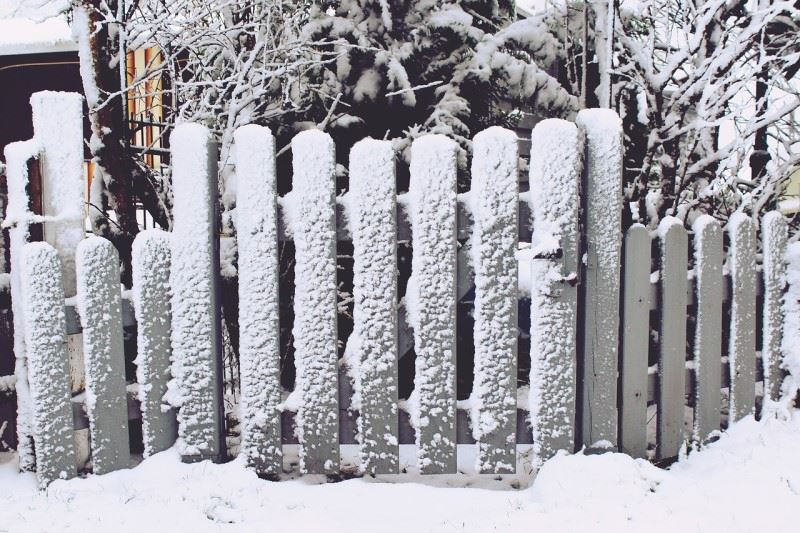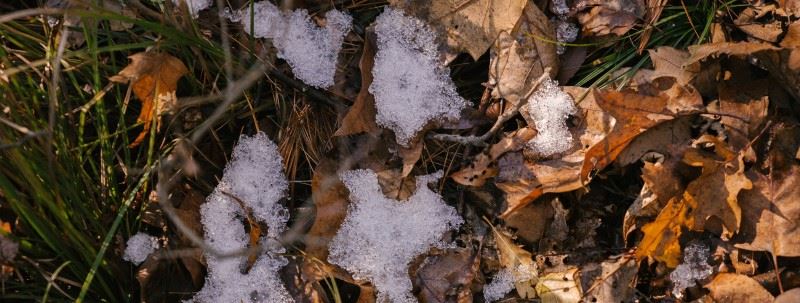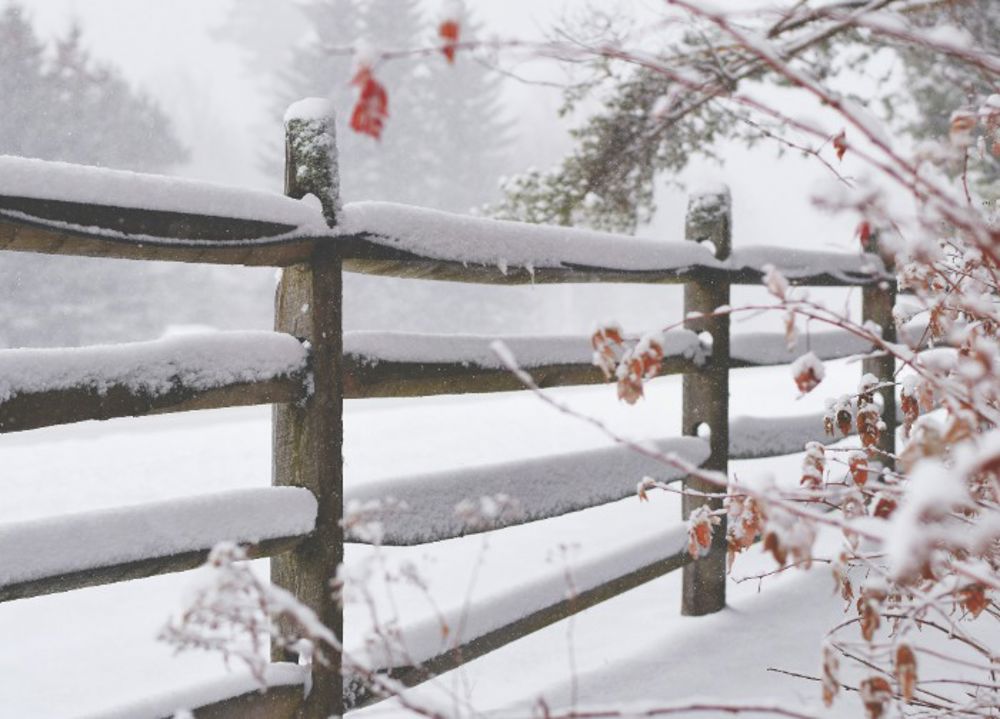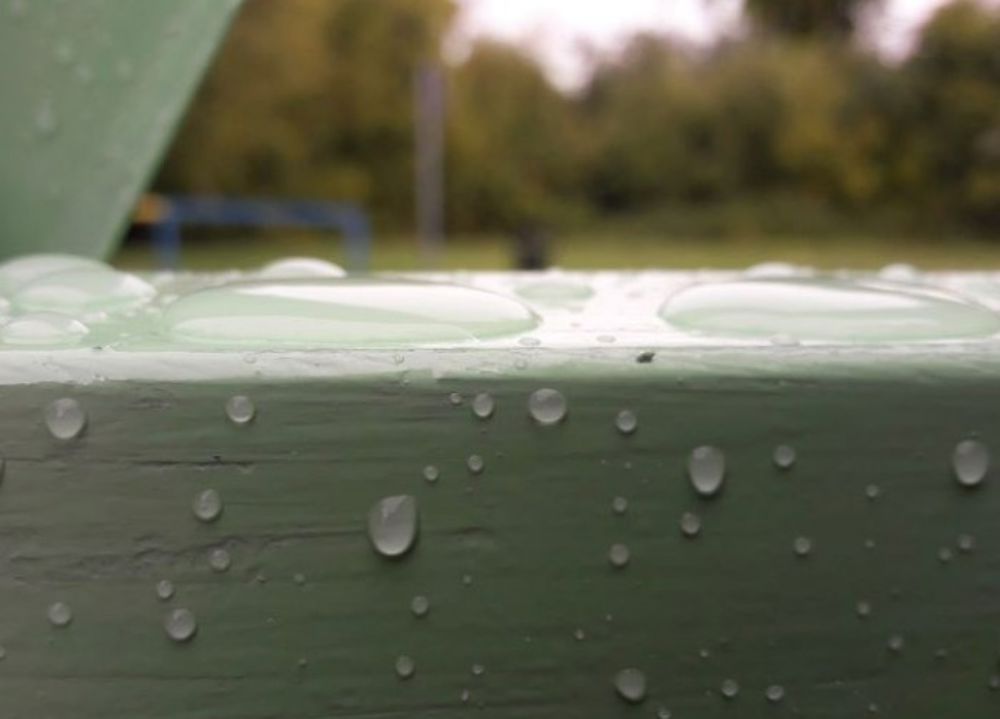
Winter Care & Protection for Your Garden Fence
Handy tips to help you maintain your wooden fences through the grim winter months. Invest a little time and effort now to save repair costs in the Spring!
Bronzed leaves have started to litter the lawn, the cover has gone over the barbecue and the rest of the family has headed for the centrally-heated bliss indoors. The true gardener, however, dons their warmer jacket and begins the annual routine of preparing their garden, and their garden fences, for winter.
Some care and attention now can make such a difference. Of course, there's a cost saving if you can keep your fences going for another year. But there's another benefit. When the really miserable weather sets in, very few of us, if we're honest, will sort out big repair jobs in the garden; so if your fence blows down in a gale in November, it might be March before you get around to repairing or replacing it!
Trentwood's busy season starts in the Spring, and many of the old fences we take away have been on the ground for a while by that time! So here are our tips to help you get your fences through the toughest time of the year. If they really aren't going to make it, though, why not get our team along to save both you and your neighbours having to look at the old ones on the ground all winter?
Carry out an inspection
Walk slowly along your fence-line, looking for obvious signs of weakness, damage or rot in posts or panels. Anything that leans is a clear indication that something isn't right. It could be that the base of the post has started to rot, and isn't providing the panel the support it needs.
You might be able to repair a post, but if it's rotted at ground level, there's little you can do except to replace it. It certainly won't survive a winter storm.

Rake away debris
Autumn gales may have started piling leaves against your fence. If they're left, moisture from the leaves will start to rot the timber, so clear them away regularly through the winter. Snow will have the same effect, so don't allow drifts of it to stay against fence panels for too long.
Gravel boards will help to protect the lower part of your fence from anything close to ground level that might rot it, so if you don't already have them, consider including them next time you replace the fence. Find out more about gravel boards.
Prune shrubbery and climbing plants
Your fences, especially trellises, are probably supporting a number of shrubs or climbing plants which can contribute to the fence's long-term decay. Prune back dead foliage or overgrown shoots to keep the amount of wet material against the fence to a minimum over winter.
How to prevent fences from rotting
Fence Posts
Prolonged exposure to moisture in the soil is a primary cause of rotting, which will eventually lead to your fence collapsing. To help your wooden fence posts last longer:
- Make sure the timber is pressure-treated and treated with an appropriate wood preservative
- Don’t use green (freshly cut) wood, as it contains more moisture, encouraging rotting. Posts should be made from properly dried timber
- Post Saver sleeves can protect the part of the post below ground to extend their life
- Using tamped down gravel in the hole around your fence posts allows water to drain quickly away from the fence post into the soil
- Cut wooden fence post tops at a slight angle – rain will run off the post instead of pooling on top and being absorbed into the post
- Protect dry fence posts from the effects of weathering with an appropriate oil-based stain, preservative or exterior wood paint
Fence Panels
Years of exposure to winter weather can leave wooden fence panels with little protection from wind, water and fungus. Some routine maintenance can help:
- Clean dirt, moss, mildew and fungus from wooden fence panels with a power washer, using long back-and-forth motions and a stiff brush or broom to help dislodge grime
- Allow fences to dry completely before applying any form of stain, paint or preservative.
- Mend or replace missing or broken boards.
- Apply exterior wood paint, wood stain or preservative using a medium-nap paint roller, a timber brush or paint sprayer. Allow the first coat to dry for 24 hours before applying a second coat.
- Clear leaves, grass and overgrown plants from the bottom of your fence panels – as vegetation rots, it can spread through the fence, causing more damage.

Look up!
While you're doing your annual inspection, don't forget to look above your fence, too. A whole Spring and Summer of growth may have left tree branches hanging precariously over your fence. A falling branch could bring down a fence panel very easily, so some maintenance there might be needed. Please be considerate and consult with your neighbour if the offending branch is in their garden!
Can you power wash a wooden fence?
Yes, if the fence is sturdy and well-supported by its posts, power-washing is a good method of cleaning off moss, mould or dirt that could rot the fence. It's also good preparation for painting or staining. A 3000psi (or greater) pressure washer will ensure you strip the fence of flaking paint, dead wood and other loose dirt and debris.
It’s important to move the water jet in the direction of the grain of the wood so it won’t leave marks when you come to stain the fence.

How often should you stain wooden fences?
Commercial wood preservatives vary in the claims they make for longevity; some products advise a fresh maintenance coat on a yearly or 2-yearly basis, while others claim up to 5-year fence protection.
One-coat products generally have a shorter life-span. Applying two coats may seem like a lot of work, especially if you have a long fence-line, but it could be worth the effort in the long run.
Follow the manufacturer’s directions for the initial application, but it won’t hurt your fence to give it an extra coat of preservative if the fence starts to look faded and dull after a year or two. Many shades are available to suit your preference.
Can you paint or stain your fences in winter?
We'd recommend waiting for a warmish, dry spell of weather to make sure your fence can dry thoroughly after painting or staining, but if you've missed the obvious summer window for this job, as long as it's not too cold or wet, there's no reason you can't paint or stain your fence in the winter.
What type of wood will cut down on maintenance time?
Hardwoods are more resilient than treated softwood timber; the slow growth of hardwoods make it denser, helping its long-term resistance to weather, but in the short term it’s an expensive option for a long run of fence panels.
If you’re considering a new gate, however, the cost is not so prohibitive.
For more advice about installing or maintaining your fences ready for winter, or for a quote for fence repairs, call Trentwood Fencing on 01865 863428 or 07900 938061.





